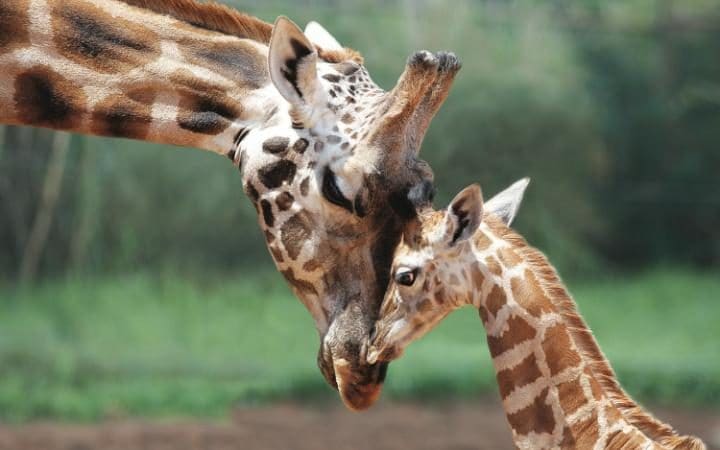Nebria is a genus of flightless beetle found in montane alpine habitats, sometimes at altitudes over 3,000m. Nebria have special adaptations, such as anti-freeze enzymes, which allow them to thrive on snowy mountain tops where other insects could not. In fact, Nebria feed upon arthropod fallout, insects which are blown to high altitudes and become immobilized on the cold snow. These same cold-tolerant adaptations may prevent them from surviving at lower altitudes (Lohse et al. 2011). As a result, their mountain top homes act like isolated “sky islands.’ Dispersing between sky islands is challenging when you can’t fly. Continue reading “Lonely at the Top: isolated mountain tops served as ice age refugia”
Evolutionary advantage of learning to cope with change
Background
Whether migratory birds will respond successfully to rapid climate change is unclear. Birds migrate to take advantage of seasonal peaks in resource availability: Food and habitat become abundant quickly during summer at northern latitudes, but decline quickly in the fall. Timely arrival on the summer range is vital for many species (Alerstam and Hedenström 1998). Continue reading “Evolutionary advantage of learning to cope with change”
There are HOW many species of Giraffes?

When did you last see a giraffe? Maybe you saw one in a zoo, a photograph, on television, or roaming the plains of Africa? Giraffes with their iconic necks are a species that is easy to recognize. They are found in the savannas of central, eastern, and southern Africa. There are differences in the appearance of these giraffes, some have cream-colored socks, some have redder spots, and the size and shape of their spots varies (Fig. 2). With this large range and varied appearances, how many species of giraffes are there? Continue reading “There are HOW many species of Giraffes?”
All is fair in (insect) love and war

Musicians alike, from Roy Orbison and Gram Parsons to Rod Stewart and classic rockers Nazareth have crooned woefully on that most powerful of feelings: Love hurts. Each of these fellas, though, had at least one thing going for him. Although they may have been jilted by former lovers, they can be thankful that none of them was a praying mantis! Scientists (and Tina Turner) may rightly question What’s love got to do with it? But there can be no doubt, mantis mating can be a very painful experience for the males involved. That’s because female predatory mantises practice sexual cannibalism, or the act of consuming a male mate before, during, or following a reproductive event. As many as one in four mantis sexual encounters may involve cannibalistic behavior. And while this bit of trivia knowledge has been known for quite some time now, two questions have continued to perplex evolutionary biologists:
How did sexual cannibalism evolve and why has it persisted in the face of natural selection? Continue reading “All is fair in (insect) love and war”
Individual Response to Drugs May Be Influenced by Your Gut Microbes
You probably know someone — or are someone — who says ‘____ drug just doesn’t work for me.’ or, ‘____ drug really messes me up’. Individual response to drug dosage is a pervasive confounding issue in health care. We know some of the pieces of the puzzle; age, metabolism, activity, and overall health are all factors contributing to individual drug response, but what if your guts have something to do with it, too? Bacteria present in the human gut make up what is called the ‘Human microbiome’, and it is the newest frontier in health research. Continue reading “Individual Response to Drugs May Be Influenced by Your Gut Microbes”
Could the Amish have it Right?

Background: Can leading a simple traditional life correlate to health in non intuitive ways such as acting as a buffer against the development of asthma? Recent studies have shown that asthma is less prominent when microbial diversity is high (Genuneit, 2012); this trend has been observed in children involved in farming (Mutius,2010). Genuneit demonstrate that children who are exposed to farming have a 25% decreased chance of experiencing asthma (Genuneit, 2012). Logically it is sensible that the diversity of microbes would be higher in children exposed to farming, with all the dirt, hay and animals that comes with it, than children who are not exposed to that environment and live in more consistent sanitary lifestyle. In other words the diversity of a bacterial community across subjects (farm children vs. non-farm children) is much higher in children exposed to farming than those who were not. But how is such a phenomenon achieved? Continue reading “Could the Amish have it Right?”
A Look at Resolving Milk Allergies Through the Gut

Background
Cow’s Milk Allergies are the most common food allergy in children, affecting 2-3% of these individuals in developed countries (Høst 2002). In most cases 45-50% of those affected by milk allergies will naturally resolve their allergies by their 1st year of age (Høst 2002). Milk allergies are associated with hives wheezing and or coughing immediately after consumption and symptoms such as cramps, itching, and diarrhea which take time to develop. A true milk allergy differs from lactose intolerance in that a milk allergy will involve actual immune system response whereas intolerance does not. The reasoning for allergy resolution is quite unclear but Bunyavanich et al. uses her study to connect allergy resolution to microbiome composition. To better understand this work,we can look at allergic responses and digestive issues as a response or the inability of the living microorganisms in the human body’s inability to process these allergens (Round & Mazmanian 2009). Continue reading “A Look at Resolving Milk Allergies Through the Gut”
Hitting Malaria where it hurts: how to eradicate the Malaria carrying mosquito.

Why should you care?
When talking about the leading causes of mortality (discounting war and starvation) a few big causes pop into most people’s minds: heart disease, cancer, and HIV-AIDS. In the westernized world, one that doesn’t come to mind is malaria, largely due to our advanced medical care and simply not having a large population of the malaria carrying mosquitoes in the genus Anopheles. However, malaria still infects roughly 225 million people per year and causes roughly 1 million deaths, the majority of which are in Africa (Murray et. al, 2012). A major field of medical research is devising methods of intercepting insect-borne diseases such as malaria, yellow fever, and the insidious Zika virus before human infection. That is, somehow preventing the mosquitoes from spreading the disease or even being infected in the first place, rather than treating the symptoms of the diseases in humans. One such experimental method is to cause significant mosquito mortality by spreading the bacterium Wolbachia, a parasite that is harmless to humans but lethal to mosquitoes after a blood meal. What would this mean for the rest of the environment and organisms? In an ideal scenario the Wolbachia parasite would target and swiftly execute only Anopheles mosquitoes, which are the ones carrying the malaria causing Plasmodium, while leaving all other types of mosquitoes that help sustain an ecosystem unharmed. There is still a lot of research to be done, but we are finding out some things about this potential biocontrol already. Continue reading “Hitting Malaria where it hurts: how to eradicate the Malaria carrying mosquito.”
Saving babies, the microbiome’s role in defeating necrotizing enterocolitis
(Photo credit flickr user: hudsonthego)
Babies born too soon
Medicine is advancing faster and faster. Babies born at 23 weeks, only 3 weeks past the halfway point of a full term pregnancy, have a 17 % chance of survival, and if they are born just one week later their chances jump to 39% (preemies survival). While there is a greater chance of survival for these babies than ever before, another statistic is also growing, according to the World health organization the number of premature births has increased worldwide. Approximately 15 million babies are be born before 37-week gestation each year, and almost a million of them die as a result. While many of these deaths are tied to lack of medical care in unindustrialized countries where the premature birth rates are extremely high, there are still risk factors for those receiving even the best of care (WHO, 2015). The lungs, brain and digestive tract of premature infants are all underdeveloped, leading to severe and sometimes life long complications; one of these complications is necrotizing enterocolitis. Continue reading “Saving babies, the microbiome’s role in defeating necrotizing enterocolitis”
What happens to your microbiome when you stop eating gluten?
The Gluten-free Diet
Celiac Disease is an autoimmune condition in which the immune system mistakenly attacks and damages the villi of the small intestine when it detects gluten. This damage can cause pain, fatigue, and diarrhea. If left untreated it can lead to complications such as infertility or cancer. Only a small number of people- around one percent of the population- actually suffer from Celiac Disease. A gluten-free diet is used as treatment for both celiac disease and non-celiac gluten sensitivity. Even though it is unknown whether a gluten-free diet is beneficial to people who do not have Celiac Disease, many people have adopted a gluten-free diet to eat healthier or lose weight. The number of people eating gluten-free is rising, with 17% of Americans actively avoid including gluten in their diet (Riffkin 2015). Continue reading “What happens to your microbiome when you stop eating gluten?”

